What’s up, I’m Indrani. I’m a writer at Freelance writer, photographer and blogger. living in Bangalore. I am a fan of writing, travel, and photography. 🌷 https://mehndiworld.in/artist/indranighose/
Don't wanna be here? Send us removal request.
Text
Darjeeling: The Queen of the Hills
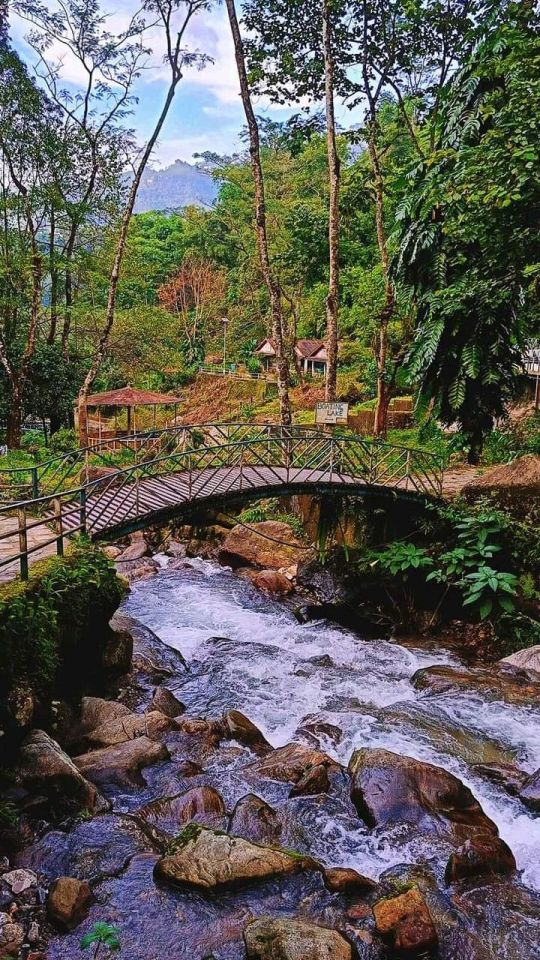
Nestled in the foothills of the Eastern Himalayas, Darjeeling is a picturesque town in the Indian state of West Bengal, renowned for its stunning natural beauty, rich cultural heritage, and world-famous tea. Often referred to as the "Queen of the Hills," Darjeeling offers a unique blend of scenic landscapes, colonial charm, and vibrant local culture, making it a favorite destination for tourists and nature enthusiasts alike.
Darjeeling's most iconic feature is its sprawling tea plantations, producing some of the finest teas in the world. The tea gardens, with their neatly trimmed bushes set against the backdrop of mist-covered mountains, create a mesmerizing landscape. Visitors can tour these plantations, learn about the tea-making process, and taste freshly brewed Darjeeling tea, renowned for its delicate aroma and distinct flavor.
The town's scenic beauty is further enhanced by its panoramic views of the snow-capped Himalayan peaks, including the majestic Kanchenjunga, the third-highest mountain in the world. Tiger Hill, a popular viewpoint, offers breathtaking sunrise views over the Himalayas, drawing visitors early in the morning to witness this spectacular sight.
Darjeeling also boasts a rich cultural tapestry, influenced by its diverse population, including Nepali, Tibetan, Bengali, and other ethnic communities. This cultural diversity is reflected in the town's festivals, cuisine, and traditional arts. The vibrant local markets are filled with handcrafted items, traditional clothing, and delicious street food, providing a glimpse into the town's lively culture.
A visit to Darjeeling is incomplete without experiencing its colonial heritage. The town is dotted with charming British-era architecture, including historic schools, churches, and the iconic Darjeeling Himalayan Railway, a UNESCO World Heritage Site. The narrow-gauge "Toy Train" offers a nostalgic journey through the hills, passing through quaint villages and lush forests.
For adventure seekers, Darjeeling offers numerous trekking and hiking opportunities, with trails leading to remote mountain villages and serene monasteries. The Padmaja Naidu Himalayan Zoological Park and the Himalayan Mountaineering Institute are also notable attractions, showcasing the region's unique wildlife and mountaineering history.
Darjeeling is a captivating blend of natural splendor, cultural richness, and historical charm, making it a must-visit destination for those seeking tranquility and adventure in the lap of the Himalayas.
0 notes
Text
Kumbhalgarh Fort
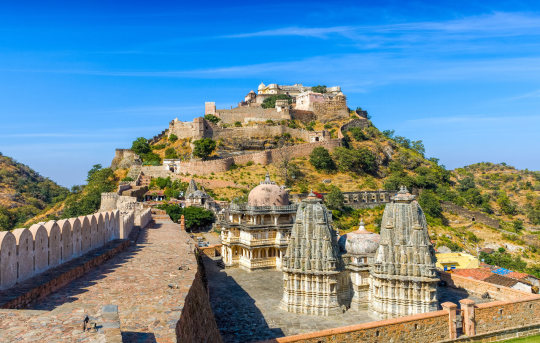
Kumbhalgarh Fort, located in the Rajsamand district of Rajasthan, India, is a magnificent fortress known for its historical significance and architectural grandeur. Built in the 15th century by Rana Kumbha, a ruler of the Mewar dynasty, this fort stands as a testament to the valiant heritage and rich cultural legacy of Rajasthan.
The fort is perched atop the Aravalli hills at an elevation of 1,100 meters above sea level, offering breathtaking views of the surrounding landscape. Its strategic location made it a formidable defensive structure, providing refuge to the rulers of Mewar during times of strife. The fort is renowned for its massive walls, which extend over 36 kilometers, making it the second-longest continuous wall in the world after the Great Wall of China. These walls, up to 15 feet thick in some places, were designed to withstand enemy attacks and have successfully protected the fort throughout its history.
Kumbhalgarh Fort houses over 360 temples, including the prominent Shiva Temple with its colossal Shivlinga. The fort also features palaces, gardens, step-wells, and residential buildings, reflecting the sophisticated planning and architectural prowess of its time. The Badal Mahal, or Palace of Clouds, is particularly noteworthy for its stunning architecture and panoramic views.
The fort's history is marked by its association with several key figures and events. It is famously known as the birthplace of Maharana Pratap, one of Rajasthan's most revered warriors. Over the centuries, Kumbhalgarh Fort has witnessed numerous battles and has played a pivotal role in the region's history.
In 2013, Kumbhalgarh Fort was recognized as a UNESCO World Heritage Site as part of the Hill Forts of Rajasthan. This acknowledgment underscores its cultural and historical significance. Today, the fort attracts thousands of tourists from around the world who come to marvel at its grandeur and explore its rich heritage.
A visit to Kumbhalgarh Fort is a journey through time, offering a glimpse into the valor and grandeur of Rajasthan's royal history. The fort stands not only as a symbol of architectural brilliance but also as a testament to the enduring spirit of the Mewar dynasty.
0 notes
Text
Hampi

Nestled in the heart of Karnataka, India, Hampi is a UNESCO World Heritage Site renowned for its vast ruins, intriguing history, and architectural marvels. Once the prosperous capital of the Vijayanagara Empire in the 14th century, Hampi stands as a testament to the grandeur and cultural richness of ancient India.
The town is set amidst a surreal landscape of giant boulders, lush banana plantations, and the meandering Tungabhadra River. This dramatic backdrop adds to the allure of Hampi, making it a favorite destination for history enthusiasts, architects, and travelers seeking a unique experience.
At the heart of Hampi lies the Virupaksha Temple, one of the oldest functioning temples in India. Dedicated to Lord Shiva, this temple complex is an architectural masterpiece with its towering gopuram (gateway tower) and intricately carved pillars. The temple remains a significant pilgrimage site and a hub of religious activities.
Adjacent to the Virupaksha Temple is the Hampi Bazaar, a bustling street that once served as a commercial center. The bazaar is lined with ancient pavilions and structures that echo the town’s vibrant past.
A short distance away, the Vittala Temple complex awaits visitors with its stunning stone chariot and musical pillars. The chariot, carved from a single rock, is an iconic symbol of Hampi and reflects the exceptional craftsmanship of the Vijayanagara artisans. The temple's musical pillars, when tapped, produce musical notes, showcasing the ingenious architectural and acoustic design of the era.
Another must-visit site is the Lotus Mahal, a beautiful blend of Hindu and Islamic architectural styles. This royal pavilion, with its lotus-like structure and delicate arches, was believed to be the recreational palace for the queens.
The grandeur of Hampi extends to the Royal Enclosure, a fortified area housing the remains of palaces, baths, and the impressive Mahanavami Dibba, a ceremonial platform offering panoramic views of the surrounding ruins.
Hampi’s historical significance, coupled with its stunning landscapes and intricate architecture, makes it a captivating destination. Whether you are exploring the ancient temples, wandering through the ruins, or simply absorbing the serene beauty of the countryside, Hampi offers a unique glimpse into India’s rich cultural and historical tapestry. The site not only attracts historians and archaeologists but also travelers from around the world, each drawn by the timeless charm of this ancient city.
2 notes
·
View notes
Text
Khajuraho
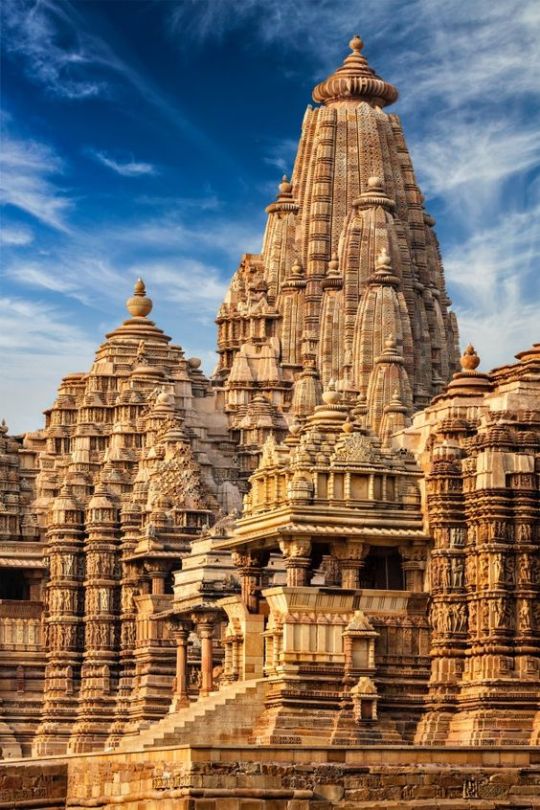
India, the birthplace of the Kamasutra, finds its ultimate expression in the enchanting town of Khajuraho. Nestled in central India, Khajuraho is a magnificent UNESCO World Heritage site that beautifully intertwines themes of love, life, lust, and worship through its stunning temple complexes.
The name Khajuraho originates from ‘khajura,’ the Hindi word for date palm fruit, abundantly found in the region. This quaint town in Madhya Pradesh is renowned for its ancient temples, built by the Chandela Dynasty in the 10th century.
The Khajuraho temples, hailed as India's most exquisite, draw inspiration from both Hindu and Jain traditions. Constructed with sandstone atop granite foundations, these temples are adorned with a breathtaking array of intricate carvings. The architectural brilliance and the detailed craftsmanship of these carvings have earned Khajuraho worldwide admiration.
While time and invading armies have taken their toll, reducing the original 80 temples to around 20 well-preserved marvels, the remaining structures continue to captivate visitors. Each temple stands as a testament to the region's rich cultural heritage and the remarkable artistry of the past.
The Kandariya Mahadeva Temple, the largest and most celebrated in Khajuraho, showcases over 825 statues and figurines. Visitors are left in awe of the sculptures, marveling at the 10th-century artists' skill in capturing expressions and narratives without uttering a single word. These stone figures tell complex stories that transcend time.
Other notable temples include the Lakshmana Temple and Chitragupta Temple, both of which are must-sees. For the perfect photo opportunity, visit during sunset when the temples glow with a golden hue.
Enhance your trip to Khajuraho with a visit to the Tribal and Folk Art Museum. This museum offers a fascinating glimpse into local crafts, traditions, and culture, providing a deeper understanding of the region’s heritage.
Just 25 kilometers from Khajuraho lies Panna National Park, a haven for wildlife enthusiasts. Home to over 200 species of birds and animals, including cheetahs, tigers, and bears, Panna offers thrilling wildlife safaris that perfectly complement your cultural exploration of Khajuraho.
If you appreciate aesthetically designed temples, seek to experience storytelling through stone sculptures, or wonder at the ingenuity of ancient artists, Khajuraho is a destination that promises to inspire and awe.
1 note
·
View note
Text
Barkana Falls
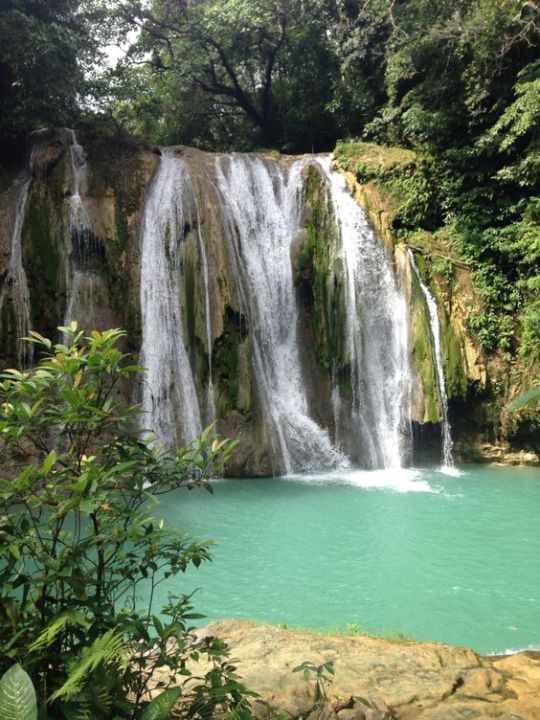
Barkana Falls is a hidden gem in the Western Ghats. The waterfall is formed by the Seetha river falling from a height of 260 meters. The cascading effect, milky white color and evergreen forests of the Western Ghats make the Falls a memorable experience.
Barkana Viewpoint offers a mesmerizing view of the Barkana valley in the Western Ghats. You can also find lots of interesting plants and select animals like frogs, snakes and insects on your trek to Barkana Falls.
Season to visit: Barkana Waterfall is most beautiful to visit between September and December/January. During the rainy season, the road is slippery and full of leeches, making it very dangerous to enter. As summer approaches, Barkana Falls may dry up and lose its splendor.
Nearby: Kundadri Hills (24 km), Sringeri (36 km), Sirimane Falls (48 km), Someshwara Wildlife Sanctuary (27 km), Kavaledurga (45 km) and Varanga Basadi lake (32 km) are Some places worth visiting along with Barkana Falls.
How to reach: The falls are 353 km from Bengaluru and 100 km from Shivamogga district headquarters. Mangaluru is the nearest airport (100 km away). Udupi is the nearest railway station (53 km). Buses are available till Agumbe. The waterfall is about 7 km from Agumbe. While some buses/cars/private vehicles can help you cover part of this distance, the last few kilometers will require you to walk.
Accommodation: Agumbe has basic accommodation options and several hostels. Seethanadi Nature Camp operated by Jungle Lodges & Resort is 22 km away. There are more accommodation options in Thirthahalli (40 km) and Hebri (26 km).
0 notes
Text
Traditional Rice Beer of Bodoland

Nestled in the northeastern part of India, Bodoland is a land rich in cultural heritage and natural beauty. Among its many traditions, the brewing and consumption of traditional rice beer stand out as a significant cultural practice. This unique beverage, known locally as 'Zau,' is not just a drink but a symbol of communal harmony and an integral part of the Bodo people's social and cultural fabric.
The Cultural Significance of Zau
Rice beer, or Zau, is more than a mere beverage in Bodoland. It holds a place of honor in various rituals, festivals, and daily life. It is brewed during significant events such as weddings, harvest festivals, and other communal gatherings. Offering Zau is a gesture of hospitality and respect, symbolizing friendship and unity among the Bodo people.
The Art of Brewing
The process of making traditional rice beer is a meticulous art passed down through generations. The primary ingredient, glutinous rice, is cleaned, soaked, and cooked. The cooked rice is then mixed with a natural fermenting agent made from local herbs, which is known as 'euphoric yeast.' This mixture is stored in earthen pots or bamboo tubes and left to ferment for several days. The fermentation process is crucial as it not only imparts the distinctive taste to the beer but also determines its potency.
Taste and Variations
Zau has a unique flavor profile that varies depending on the type of rice and the fermenting agent used. Generally, it has a mildly sweet and tangy taste, with a slightly earthy aroma. The alcohol content can vary, making it a versatile drink enjoyed by people of all ages. There are also variations in preparation methods across different Bodo communities, leading to subtle differences in taste and texture.
Health Benefits
Interestingly, traditional rice beer is often touted for its health benefits. The natural fermentation process preserves many of the rice's nutrients, making the beer rich in vitamins, particularly B vitamins, and minerals. It is also believed to aid digestion and improve gut health due to the presence of probiotics. However, like any alcoholic beverage, moderation is key to enjoying its benefits.
The traditional rice beer of Bodoland, Zau, is a testament to the region's rich cultural heritage. It embodies the spirit of community, tradition, and celebration. As we raise a glass of this delightful brew, we honor the centuries-old traditions and the skilled hands that keep this cultural elixir alive. Whether you are a connoisseur of traditional beverages or a curious traveler, experiencing Zau is a journey into the heart of Bodoland's vibrant culture.
0 notes
Text
Exploring the Rich Tapestry of Jajpur's Local Music in Orissa
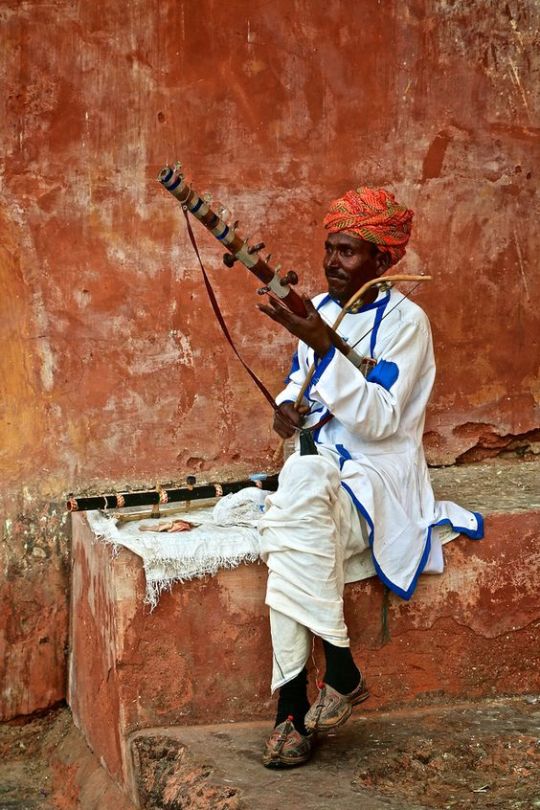
Jajpur, a culturally vibrant district in Orissa, is not only known for its historical significance but also for its rich and diverse musical heritage. The local music of Jajpur offers a fascinating glimpse into the region's traditions, spiritual practices, and community life.
The heart of Jajpur's musical landscape lies in its traditional folk music, which is deeply rooted in the daily lives and rituals of the local communities. Songs like the "Karma" and "Dalkhai" are performed during agricultural festivals and celebrations, reflecting the close connection between the people and their land. These folk tunes are often accompanied by traditional instruments such as the mardala (a type of drum), flute, and harmonium, creating a soulful and earthy sound.
Jajpur is also renowned for its devotional music, which plays a significant role in the spiritual life of its inhabitants. Bhajans and kirtans, sung in praise of Hindu deities, are a staple in the region's temples and during religious festivities. The famous Baladevjew Temple in Jajpur frequently hosts musical gatherings where devotees come together to sing and offer their prayers through music. These devotional songs are characterized by their melodious tunes and profound lyrics, often invoking a deep sense of devotion and peace.
The influence of classical Odissi music is also evident in Jajpur. Odissi music, with its intricate rhythms and sophisticated melodies, has a long-standing tradition in Orissa. Many local musicians in Jajpur are well-versed in this classical form, contributing to its preservation and propagation. The region's music schools and cultural organizations often organize workshops and performances to keep the classical music heritage alive.
Jajpur's vibrant festivals provide a perfect platform for showcasing its local music. During the Rath Yatra, Durga Puja, and other cultural festivals, the streets of Jajpur come alive with the sounds of drums, cymbals, and devotional singing. These celebrations are a testament to the communal spirit and the integral role of music in the cultural fabric of Jajpur.
0 notes